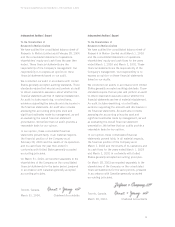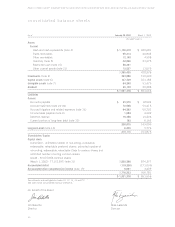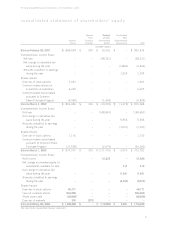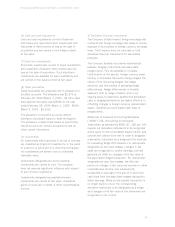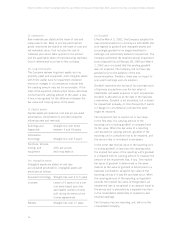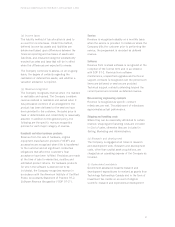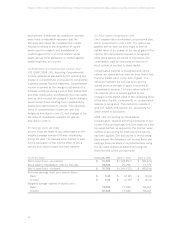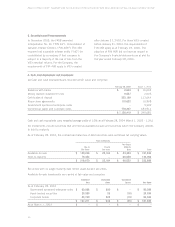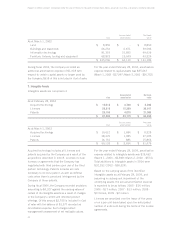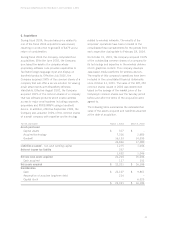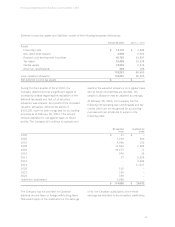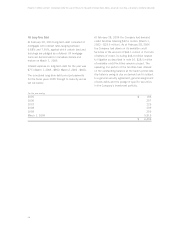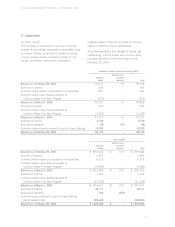Blackberry 2004 Annual Report Download - page 41
Download and view the complete annual report
Please find page 41 of the 2004 Blackberry annual report below. You can navigate through the pages in the report by either clicking on the pages listed below, or by using the keyword search tool below to find specific information within the annual report.
39
For the years ended February 28, 2004, March 1, 2003 and March 2, 2002
(v) Warranty
The Company estimates its warranty costs at the
time of revenue recognition based on historical
warranty claims experience and records the expense
in Cost of sales. The warranty accrual balance is
reviewed quarterly to assess whether it materially
reflects the remaining obligation based on the
anticipated future expenditures over the balance of
the obligation period. Adjustments are made when
the actual warranty claim experience differs from
estimates.
(w) Advertising costs
The Company expenses all advertising costs as
incurred. These costs are included in Selling,
marketing and administration.
The weighted average fair value of options granted during the year was calculated using the Black-Scholes
option-pricing model with the following assumptions:
For the year ended February 28, 2004 March 1, 2003 March 2, 2002
Number of options granted (000’s) 1,574 956 2,978
Weighted average Black-Scholes value of each option $ 16.57 $ 8.58 $ 12.00
Assumptions:
Risk free interest rate 3.0% 4.5% 4.0%
Expected life in years 4.0 3.5 3.5
Expected dividend yield 0% 0% 0%
Volatility 70% 70% 75%
2. Adoption of Accounting Policies
(a) Stock-based compensation
In December 2002, the FASB issued SFAS 148,
Accounting for Stock-Based Compensation. SFAS
148 amends SFAS 123 to provide alternative
methods of transition for a voluntary change to the
fair value based method of accounting for stock-
based compensation. There was no effect on the
Company’s results of operations and financial
position for SFAS 148, as the Company has not yet
adopted the fair value based method.
(b) Derivative instruments
In May 2003, the FASB issued SFAS 149,
Amendment of Statement 133 on Derivative
Instruments and Hedging Activities. The statement
clarifies and amends accounting for derivative
instruments including certain derivative instruments
embedded in other contracts and for hedging activities
under SFAS 133. SFAS 149 is effective for contracts
entered into or modified after June 30, 2003. The
Company has determined that there was no effect
upon the adoption of SFAS 149.
(c) Financial instruments
In May 2003, the FASB issued SFAS 150,
Accounting for Certain Financial Instruments with
Characteristics of both Assets and Liabilities. SFAS
150 addresses the accounting for mandatory
redeemable shares, put options and forward
purchase contracts of the Company’s shares, and
instruments that are liabilities under this Statement
that can be settled for shares. This standard is
effective for all financial instruments entered into or
modified after May 31, 2003, and is otherwise
effective for the first interim period beginning after
June 15, 2003. There was no effect on the
Company’s results of operations and financial
position upon the adoption of SFAS 150.


